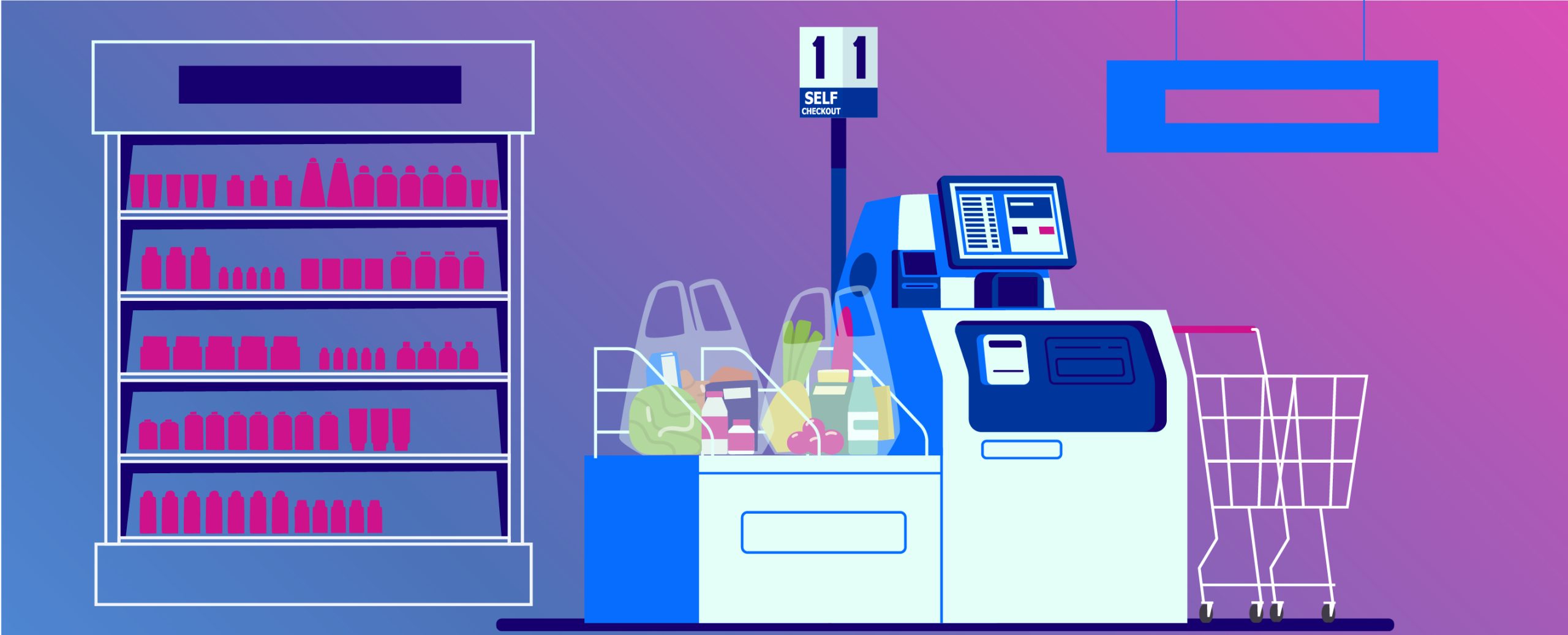How to Fight Crime at the Self-Checkout Lane

Shelf-checkout can improve the shopping experience and help retailers manage operations with fewer people. But the downside of self-checkout: more crime.
As reported recently in Business Insider, Walmart has threatened to close some of its stores because of a surge in theft, and many employees believe that Walmart’s increased reliance on self-checkout is part of the problem. Walmart is not the only retailer at risk, too. Reports have suggested that up to 20 percent of people who use self-checkout have stolen something while using it.
So, what is the problem? Well, when self-checkout is running smoothly, a higher volume of shoppers can manage their own transactions by using store-supplied scanners and a store app if available. Shoppers do their own bagging at their own pace. Store associates intervene only if shoppers need help, such as a scanner that is not working properly. Unfortunately, the same frictionless process also makes it easier for a skilled criminal to game the system. In all, self-checkout poses these problems:
- There are not enough store associates to monitor self-checkout lanes. Self-checkout is supposed to free up employees to work on other tasks, which leaves few employees (by design) assigned to monitor self-checkout. This situation makes it easier for thieves to commit crimes undetected.
- There are many ways for thieves to commit self-checkout crime. They include barcode swapping (when a customer scans a barcode from a different item), mis-scanning (a customer deliberately mis-scans an item), non-scanning (a customer does not scan a product), and walkaways (a customer simply walks through the lane without scanning anything).
Of course, fighting crime at the self-checkout counter must be balanced with the need to deliver great customer service. Customers can also simply make mistakes, too, an example being a distracted shopper who simply fails to scan a product properly. Store associates understandably are uncomfortable confronting shoppers over actions that turn out to be simple mistakes. This is unpleasant for both the customer and the store associate, not to mention a drain on productivity.
Some retailers have been encouraged by vendors to overinvest into solutions that have failed to effectively combat the problem. For instance, some retailers have installed multiple cameras to monitor shoppers at the self-checkout counter. But too much monitoring can backfire by reporting false positives, which creates even more of a strain on the customer experience. Cameras watching every move a shopper makes at a self-checkout lane might falsely report that someone is placing an unscanned item into their purse when in fact they’ve simply placed their mobile phone on top of their purse in their cart while they focus on scanning. And cameras can report false negatives, too – or incorrectly identifying malicious activity as benign.
What’s the answer? At Centific, our Scout+ offering uses a technology known as behavior anomaly detection to help retailers fight crime at the self-checkout lane while improving customer service. Behavior anomaly detection consists of the use of computer vision and pattern recognition to keep stores safe, fight theft, and improve customer service.
The key components:
- Computer vision, a form of artificial intelligence (AI) that makes it possible for computers to record visual data such as pictures and video. Computer vision gives store managers real-time insight into everything that is going on in a store to a level of detail that typical cameras miss.
- Pattern recognition consistently detects behavioral anomalies, such as people in stores who are acting suspiciously (say, someone trying to steal versus someone who is simply picking up a product to examine it more closely).
Rather than try to monitor every single object being processed at the self-checkout lane, our model uses object counting to detect and count objects in a cart and compare them against how many objects have been scanned. This approach has the benefit of reporting fewer false positives, which thus achieves the balance between fighting theft and servicing customers without interruption.
Scout+ helps protect from shrink directly at self-checkout and point of sale.It helps retailers protect their bottom line and strengthen customer loyalty by providing a frictionless experience focused on minimizing false positives. Features include:
- Minimal hardware required.
- Integrated to POS software and hand scanners.
- Powerful cloud native ensemble AI.
Scout+ ultimately empowers store associates with the confidence to act while providing a positive customer experience. The solution is based on Scout, which is designed to safeguard stores and improve service beyond the self-checkout lane. To fight crime and service customers effectively in your stores, contact Centific.
